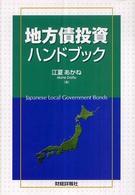- ホーム
- > 洋書
- > 英文書
- > Business / Economics
Full Description
In the fall of 1990, the Danish government started a comprehensive research pro gramme to improve the competitiveness of the Danish food sector: The Research and Development Programme in the Danish Food Sector (Det F!Ildevareteknologiske Forsk nings- og Udviklingsprogram, F0TEK). The programme was based on a combination of basic research to be carried out by universities and other research institutions, and a series of collaboration projects between researchers and food companies. The programme was originally designed as a technological research programme. However, in the planning phases of the research programme, the view that the development of new technologies and products may not be sufficient to improve competitiveness made some ground. A small comer of the overall research effort was therefore set aside for market-oriented research. This comer was filled by the research programme Market-based process and product innovation in the food sector (MAPP). MAPP was a joint research programme in which researchers from several Danish universities and business schools participated; it was coordinated by the Aarhus School of Business. MAPP set out to achieve a difficult task: to conduct high quality research on various aspects of the marketing of food products, to do so in cooperation with food companies, and to win under standing and recognition from the colleagues in the food technology departments.
Contents
I: Introduction.- 1: Market orientation, product development and competitive advantage.- II: Generating market intelligence.- 2: The systematic generation of market intelligence.- 3: Analysing consumers at the aggregate level.- 4: Analysing consumers at the individual level.- 5: Analysing distributors at the aggregate level.- 6: Analysing distributors at the organisational level.- 7: Case: The generation of market intelligence in a medium-sized food company.- III: Developing market responsiveness and profitability.- 8: A framework for understanding market responsiveness.- 9: Short- and medium-term product and process development.- 10: Long-term development of firm and industry.- 11: Developing supplier and customer relations.- IV: Conclusion.- 12: Market orientation and agriculture: Summary, implications and research perspectives.- References.


![入江泰吉カレンダー 〈2019〉 - 奈良大和路 春夏秋冬 [カレンダー]](../images/goods/ar2/web/imgdata2/48381/483819837X.jpg)




